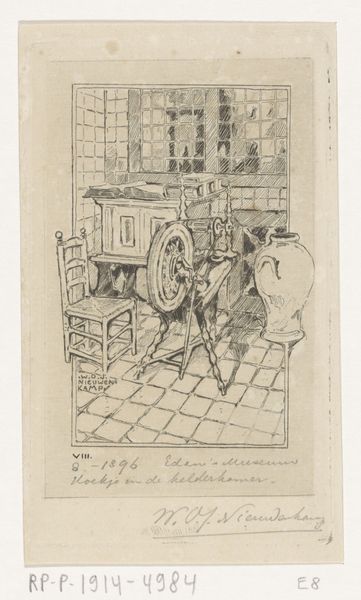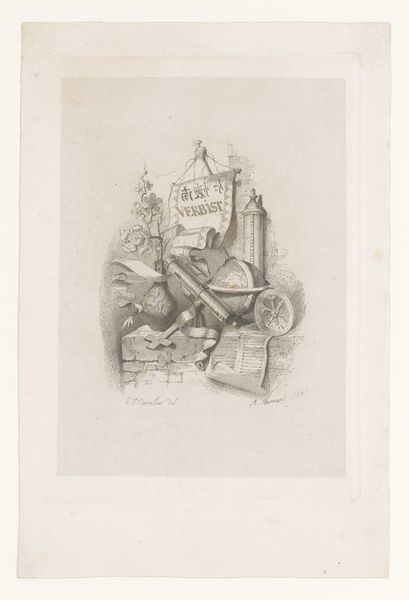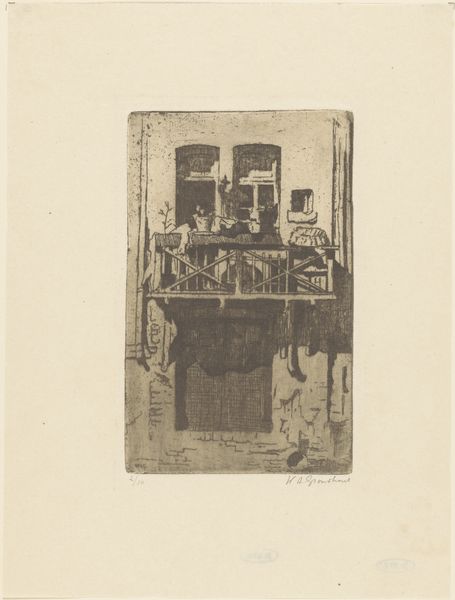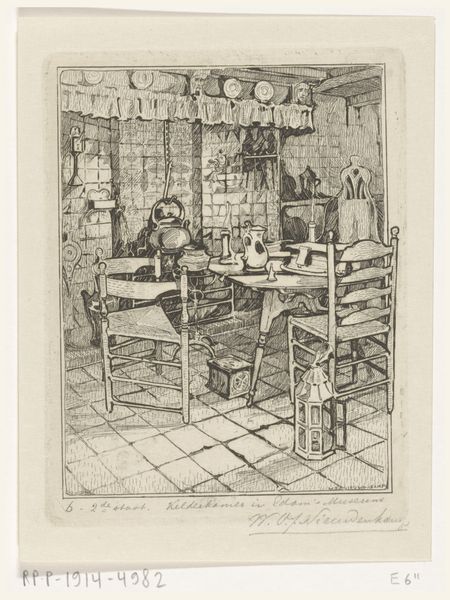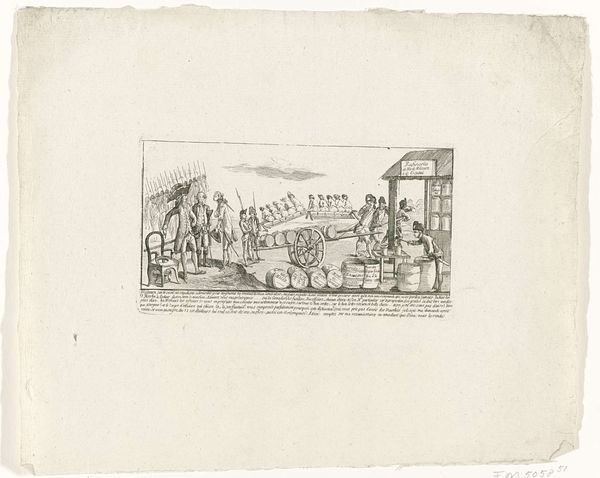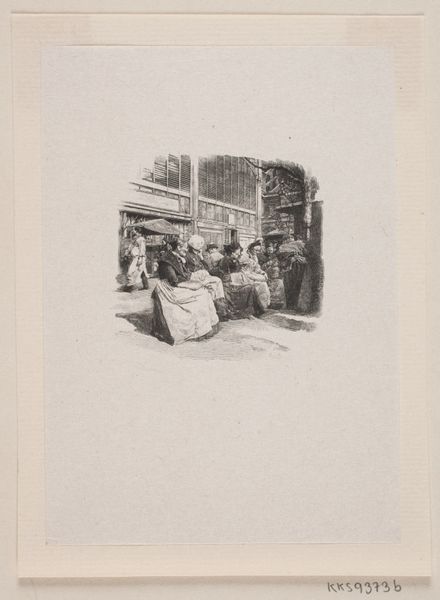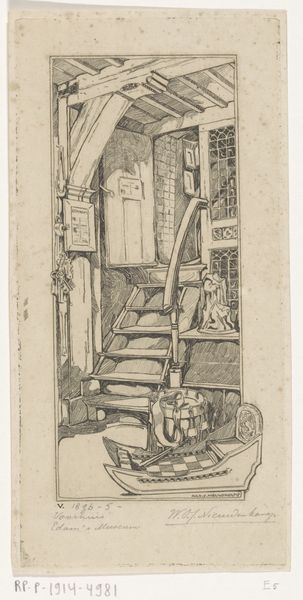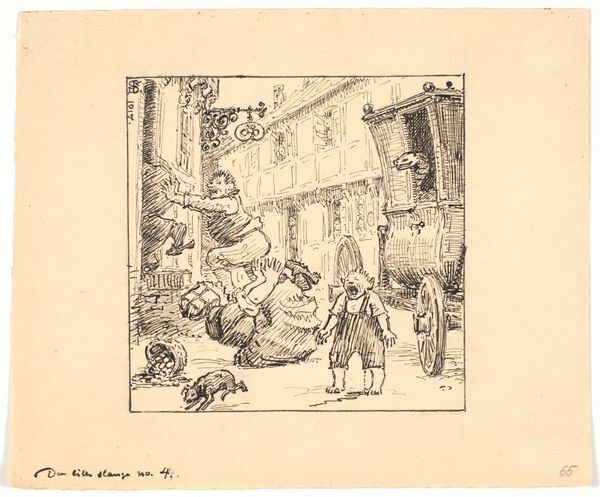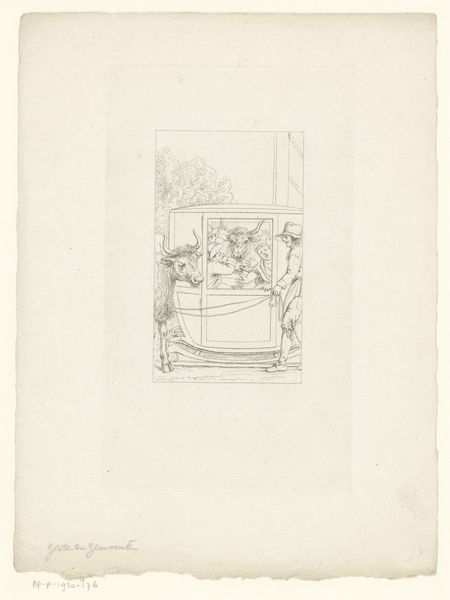
Dimensions: height 122 mm, width 96 mm
Copyright: Rijks Museum: Open Domain
Curator: This is Wijnand Otto Jan Nieuwenkamp's "Opkamer in het Edams Museum," created in 1896. It's a detailed ink drawing capturing a room within the museum. Editor: It’s immediately striking – a captivating array of textures achieved solely with line. The density varies dramatically, creating a real sense of depth despite the limited tonal range. Curator: Indeed. Nieuwenkamp, deeply involved in cultural preservation, likely saw the museum, and especially this room, as a curated display of Edam's heritage. The objects represent the material culture and history of the region, consciously arranged for public view. Editor: And that perspective emphasizes the materiality; it is all meticulously observed: The rough-hewn wooden beams, the ornate carvings on the chest, even the gleam on what appear to be pewter dishes atop the cabinet. The artist is interested in volume, represented via line, to create realistic renditions of these household objects. Curator: Absolutely, museums were gaining prominence in the late 19th century as spaces to educate and inspire civic pride. Nieuwenkamp's depiction, rather than focusing on grand historical narratives, centers on everyday domestic objects elevating their importance as historical artifacts. This focus resonated with the rise of local history movements. Editor: There's a wonderful tension created by the relatively close vantage point. The artist positions us very close to the subjects and makes us conscious of our bodies in relationship to the artwork, such as in contrast to a wider urban street scene or a panorama from nature. And that choice emphasizes form. Curator: He uses linear detail to describe each item precisely. Consider the tiles that fill the composition; each one functions as a part of a constructed tableau of local art for public viewing, serving the museum's goals of documenting history. Editor: Thinking purely formally, that tile collection makes for incredible compositional structure. The rigid geometric structure plays in beautiful contrast with the softness and intricacy of the objects in the center of the image. Curator: The scene then represents not just a room, but an embodiment of historical consciousness—the museum literally becomes a repository of stories for a burgeoning bourgeois public. Editor: And thanks to the success of those contrasted textures—the starkness of geometric grids beside complex ornament—the viewer gets an exciting impression from those various shapes and tonal consistencies in tandem. Curator: Ultimately, this drawing showcases how museums shape our understanding of the past. Nieuwenkamp subtly asks us to consider who decides what objects are worthy of preservation and remembrance. Editor: Well said! A compelling piece both formally and conceptually; it presents the viewer with varied interests and considerations.
Comments
No comments
Be the first to comment and join the conversation on the ultimate creative platform.
